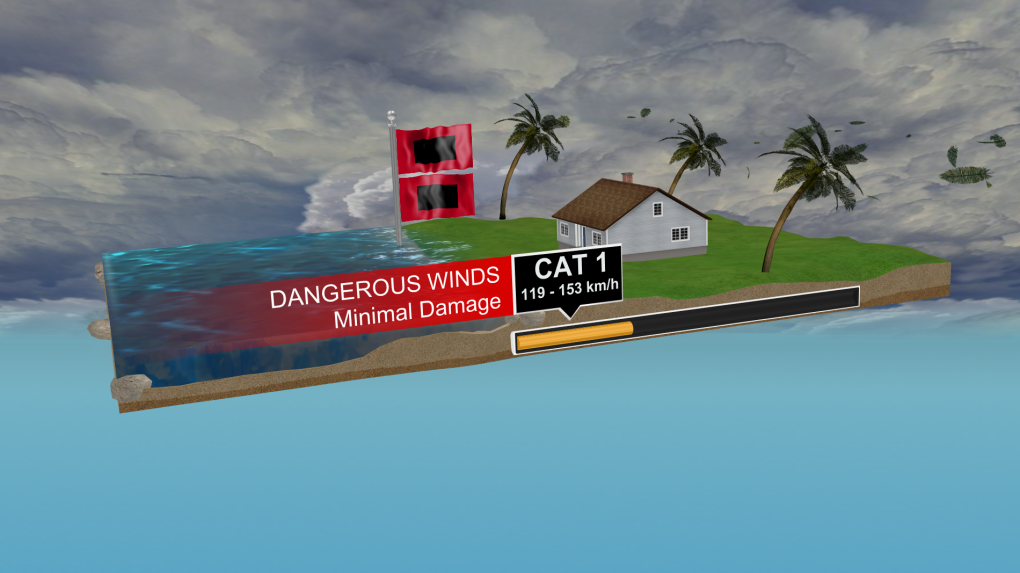Category 5 Beryl: A record-setting and deadly hurricane
The 2024 Atlantic hurricane season has been off to a rare and dangerous start.
Hurricane Beryl is the earliest Category 4 and Category 5 hurricane on record for the Atlantic, developing as a result of primed conditions that favour a very active hurricane season. Those conditions include record setting warmth in the tropical Atlantic waters and a favourable wind environment.
“The current conditions in the tropical Atlantic are more akin to something we’d expect during the typical peak of hurricane season in September,” says Bob Robichaud, warning preparedness meteorologist with the Canada Hurricane Centre.
“This has been a building situation in the Atlantic with record-setting water temperatures extending as far back as the winter before last.”
Only about two per cent of the major hurricanes on record in the Atlantic have occurred in the month of July, giving context to how statistically rare it is have a major storm this early in the season.
Hurricane categories explained
The Saffir-Simpson Scale is a method of rating the intensity of a hurricane based on a maximum one-minute sustained wind.
Developed in 1971 by Herbert Saffir and Robert Simpson, the scale ranges from Category 1 to Category 5. While utilized largely since 1974, the scale has undergone some revisions and updates over the years.
 A Category 1 hurricane is declared once the maximum sustained wind speed reaches 119 km/h.
A Category 1 hurricane is declared once the maximum sustained wind speed reaches 119 km/h.
A Category 1 hurricane is declared with a maximum sustained wind of at least 119 km/h and a category five hurricane with a maximum sustained wind of at least 252 km/h.
The risk of wind damage to structures escalates as the category increases. A Category 1 hurricane should cause little wind damage to well constructed structures, though power outages can still be extensive. At Category 5, a hurricane poses a risk of extensive building damage or failure, can cripple power infrastructure for weeks or months, and flatten extensive areas of trees.
 Category 5, the top end of the Saffir-Simpson Scale, the maximum sustained wind speed of the storm at least 252 km/h.
Category 5, the top end of the Saffir-Simpson Scale, the maximum sustained wind speed of the storm at least 252 km/h.
The wind speed of a hurricane can be evaluated by a number of methods including dropping a sensor, known as dropsonde, from a hurricane surveillance aircraft. Data from weather satellites can also be used to infer the potential maximum wind speed of the storm.
Shortfalls of the scale
The scale does not account for other hazards posed by hurricanes. Those include magnitude of storm surge, torrential rain, and tornadoes. It is the water hazards with hurricanes that have historically been the deadliest part of the storms. Storm surge in particular, but also flash flooding and mudslides triggered by the rain.
CTVNews.ca Top Stories

10 people are wounded in a shooting outside a New York City nightclub
Ten people were wounded in a shooting outside a New York City nightclub while they were waiting to get into a private event, police said.
DEVELOPING Weather warnings issued in 6 provinces and territories
Wintry weather prompted warnings in six provinces and territories early Thursday morning.
DEVELOPING U.S. Army veteran who killed 15 in New Orleans attack was inspired by Islamic State
A U.S. Army veteran who drove a pickup truck into a crowd of New Year's revelers in New Orleans, killing 15 people, had posted videos to social media hours before the carnage saying he was inspired by the Islamic State group and expressing a desire to kill, the president said.
Here's how immigration rules are changing in 2025
Canada's federal government is changing course on immigration with a wave of tighter caps on newcomers and new rules for permanent and non-permanent residents.
Who are Canada's top-earning CEOs and how much do they make?
Canada's 100 highest-paid CEOs earned $13.2 million on average in 2023 from salaries, bonuses and other compensation, according to the Canadian Centre for Policy Alternatives.
Jocelyn Wildenstein, 'Catwoman' socialite known for her extreme cosmetic surgery, dies
Jocelyn Wildenstein, the Swiss-born socialite famous for the surgery-enhanced feline features that earned her nicknames in the American press like 'Catwoman,' has died.
opinion 7 tips to give yourself a financial restart this new year
The start of a new year is the perfect time to take control of your finances and set yourself up for success, says personal finance contributor Christopher Liew in a column for CTVNews.ca.
Canadian government watering down promise to fully scrutinize firearms before sale, group says
A leading gun-control group is accusing the Liberal government of watering down a promise to ensure firearms are properly scrutinized before entering the Canadian market.
North Atlantic right whales should live past 100 years old. They're dying around 22
North Atlantic right whales should live well past 100 years, but threats to the endangered species, including from commercial crab and lobster fishing, have cut their lifespan to a fraction of that, a recent study suggests.

































